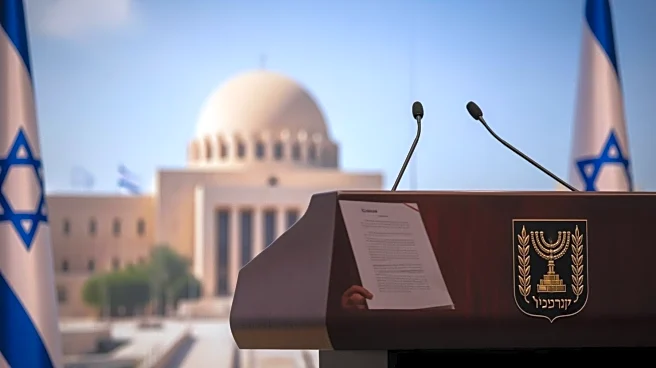What's Happening?
Israeli Prime Minister Benjamin Netanyahu has criticized Hamas following the mistaken release of a Gazan body in place of an Israeli hostage. The incident occurred during a hostage exchange, where Hamas returned
the body of a Gazan man dressed in an IDF uniform, believed to be a fighter killed in the ongoing conflict. This mistake has sparked tensions and highlighted the complexities of the Israel-Hamas war, which has seen numerous hostages taken and exchanged. Netanyahu's comments reflect the ongoing challenges in negotiating with Hamas and the difficulties in ensuring accurate exchanges.
Why It's Important?
The mistaken release underscores the chaotic nature of the conflict between Israel and Hamas, complicating efforts to resolve hostage situations. It highlights the challenges faced by both sides in managing exchanges and maintaining trust during negotiations. For Israel, the incident raises concerns about the reliability of Hamas in adhering to agreements, potentially affecting future negotiations and ceasefire deals. The situation also impacts the families of hostages, who face uncertainty and emotional distress due to such errors.
What's Next?
The Israeli government is likely to reassess its approach to negotiations with Hamas, potentially tightening protocols to prevent similar mistakes. This could lead to increased scrutiny and demands for accountability from Hamas. The incident may also influence international mediation efforts, as stakeholders seek to ensure more reliable and transparent processes in hostage exchanges. The broader conflict between Israel and Hamas remains volatile, with ongoing military and diplomatic efforts to reach a lasting resolution.
Beyond the Headlines
The incident raises ethical questions about the treatment of hostages and the responsibilities of warring parties in ensuring humane and accurate exchanges. It also highlights the psychological impact on families involved, who endure prolonged uncertainty and distress. The situation reflects broader issues of trust and communication in conflict resolution, emphasizing the need for robust mechanisms to manage such sensitive exchanges.











